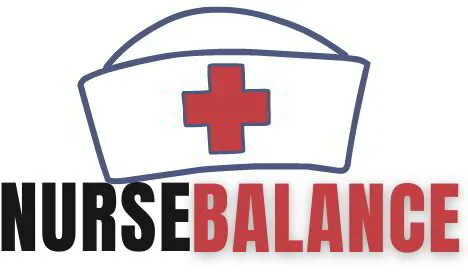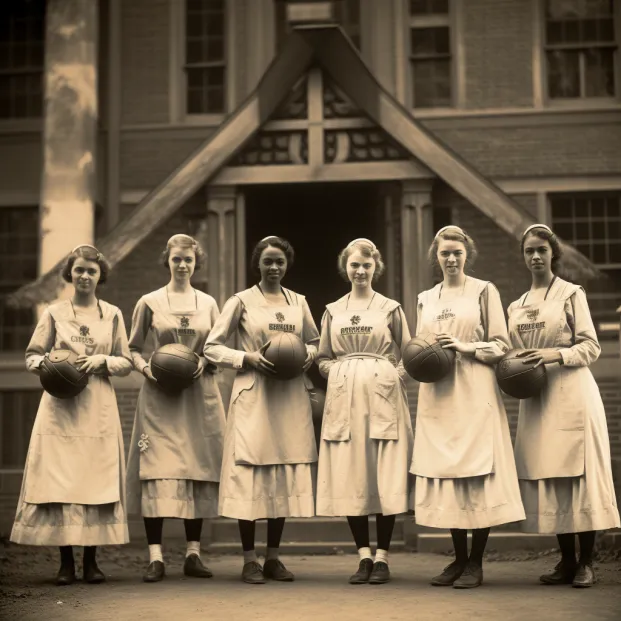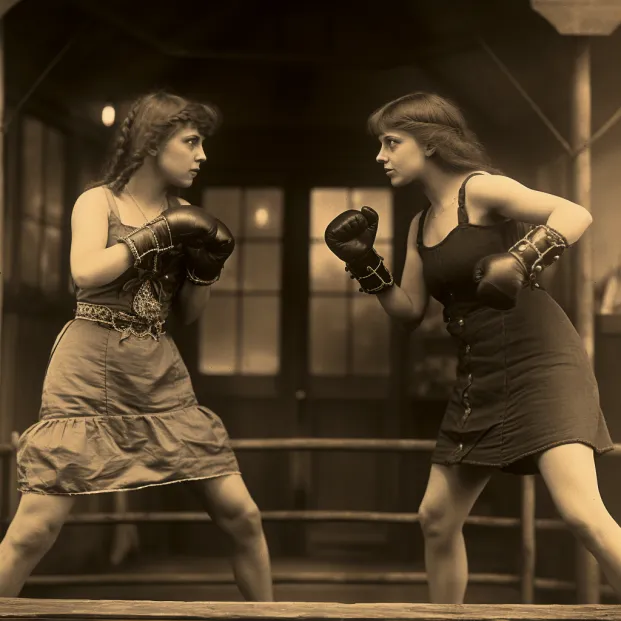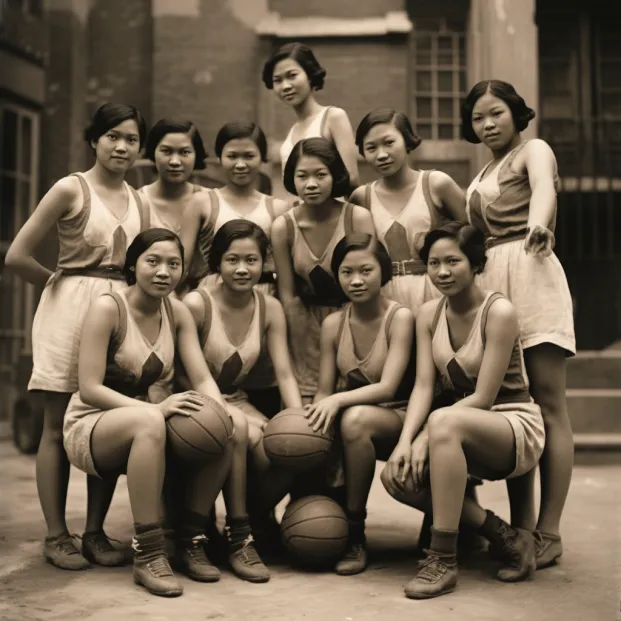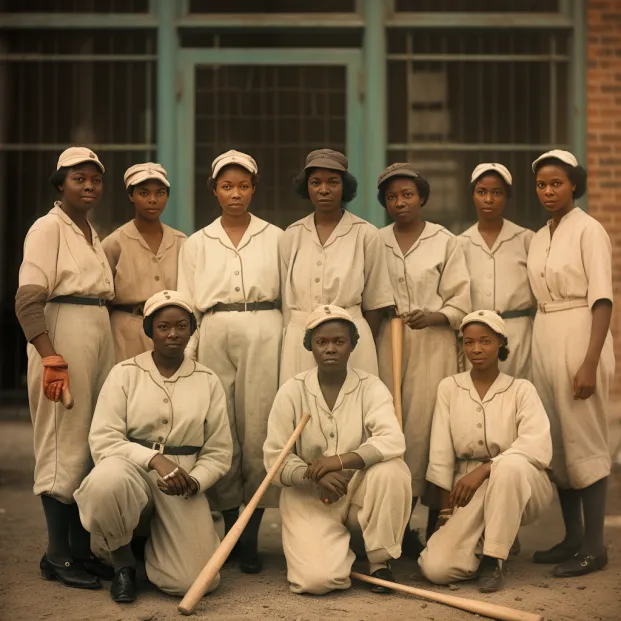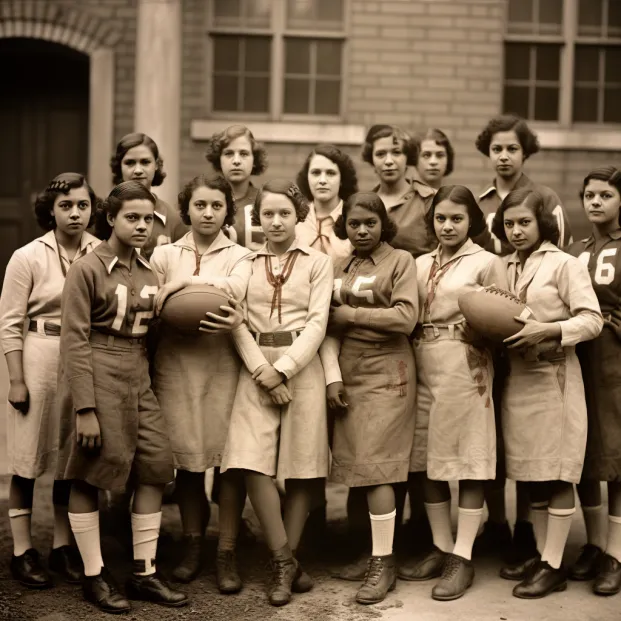The Forgotten League: When Hospital Nurses Took the Field[continued]
The Spark of an Idea
Hospitals needed to act. Fast. Beyond the concern for their nurses' wellbeing, there was an underlying fear that the weight gain and resulting health issues might compromise patient care. The administrations began brainstorming ways to combat this growing issue.
It was Riverside Hospital's forward-thinking Director, Dr. Maurice Thompson, who proposed a novel idea: sports. His belief was simple - if the nurses engaged in regular physical activity, it would not only help with weight management but would also provide a much-needed emotional outlet.
Vintage 1921 photo of Dr. Maurice Thompson
The Rise of the Nurse Athletes
By late 1921, Riverside Hospital inaugurated its first nurses' basketball team: The Riverside Revelers. Soon, word spread across state lines and even borders. Public Service Hospital in Chicago and Marine Hospital in Staten Island quickly followed suit, forming their own baseball and football teams respectively.
As word spread, Canadian hospitals, like Riverview Hospital in British Columbia and Tranquille Sanatorium in Kamloops, also embraced the idea. The Riverview Racers became known for their swift marathon runners, while Tranquille Titans boasted an impressive women's boxing league.
But it was not just about competition or weight loss; the initiative built a sense of camaraderie among the nurses. Amelia Rodriguez, a former nurse at the Seaside Sanatorium in Connecticut, once shared in an old interview, "On the field, we were not just nurses. We were warriors, teammates. The pitch was our battleground, and we left our stress and worries there."
1921, Riverside Hospital inaugurated its first nurses' basketball team: The Riverside Revelers.
Diane Smith a nurse from Marine Hospital (Stapleton, Staten Island, New York) and Jane Peters a nurse from Saint Vincent de Paul Hospital (Brockville, Ontario) became fierce boxing rivals and international champions at Hospital Boxing Tournaments from 1925 to 1930.
International Glory and Rivalries
The sports initiative reached its zenith in the late 1930s. Hospitals began organizing tournaments, fostering healthy rivalries. A memorable 1937 international championship game between the Kings Park Kickers and Queen Mary Veterans' Valkyries went down in history, not just for its thrilling penalty shootout but for the spirit of unity and celebration it represented.
The Norwich Nightingales of Connecticut were renowned for their unbeatable tennis doubles, while Danvers Dashers from Massachusetts were the queens of the marathon, often practicing in the sprawling hospital grounds.
Topeka State Hospital Nurses Football Team and national champions (Topeka, Kansas) 1924 to 1927.
The Riverview Racers nurses became known for their swift marathon runners.
The Sunset of the Era
However, like all good things, the age of the nurse athletes began to wane by the 1950s. The Second World War saw many nurses enlisting as wartime nurses, and post-war, the focus shifted towards technological advancements in healthcare and other means of addressing workplace stress.
Teams began to disband. The sprawling fields that once echoed with cheers and friendly jeers were repurposed or sold off. Hospitals like Topeka State Hospital in Kansas and Forest Haven in Maryland saw their teams fade into memories.
Filipino Nurses Basketball Team from Danvers State Hospital (Danvers, Massachusetts) won national champions 1922 to 1924 at Hospital Basketball Tournaments.
Caribbean American Nurses Baseball Team and Champions from 1927 to 1929 from Forest Haven Hospital (Laurel, Maryland). Nurses on this team were Antiguan, Barbudan, Bahamian, Barbadian, Grenadian, Haitian, Jamaican, Kittitian, Nevisian, Saint Lucian, Vincentian, Trinidadian and Tobagonian.
Spanish American Nurses Football Team and Champions from 1923 to 1928 from Marine Hospital (Stapleton, Staten Island, New York) This American football team was very diverse. The Nurses on this team were Puerto Rican, Uruguayan, Venezuela, Nicaraguan, Panamanian, Paraguayan, Peruvian, Dominican, Ecuadorian, Salvadoran, Guatemalan, Honduran, Mexican, Argentinean, Bolivian, Colombian and Cuban.
Legacy and Lessons
Though the era of the nurse sports teams was short-lived, its impact was profound. It was a testament to the power of community, resilience, and the indomitable spirit of those in the nursing profession. These teams provided an invaluable outlet for the stress and emotional toll inherent in the job.
Today, as we navigate through another global health crisis, the tales of the nurse athletes remind us of the importance of community support and finding innovative solutions to workplace challenges. While the whistle may have blown on the nurse sports teams, their spirit lives on in every nurse who takes to the front lines, battling not just diseases but their own personal challenges, with grace and determination. If weight management is one of your challenges, we've crafted a specialized survey for nurses to offer support tailored to your needs.
Penelope Hartman is a Registered Nurse, a healthcare historian and has authored multiple books on the evolution of healthcare practices in North America. She is a contributing writer for The New York City Times.
Golf - health benefits
Golf, celebrated globally, is a sport where players navigate a ball through a sprawling outdoor course into a sequence of holes using the fewest strokes, employing an assortment of clubs made of wood or iron. In 2005, nearly 32,000 golf courses were recorded worldwide, offering abundant opportunities for engagement. The sport offers a mentally engaging challenge and a wholesome walk amidst delightful environments, accommodating players of all skill levels and ages. It can be enjoyed solo or in a team and can either be a leisurely activity or a competitive pursuit.
Quality Matters
Benefits of Playing Golf for Health
Golf not only serves as a recreational activity but also boosts your health and heart wellness. Trekking across an average golf course can span five to seven kilometers. By walking through 18 holes three to five times weekly, your heart receives the ideal endurance workout. Opting to pull or carry your clubs amplifies the calorie burn and enhances the benefits.
Regular golf sessions can aid in:
Maintaining physical fitness
Enhancing muscle strength and stamina
Shedding weight and reducing body fat.
Additional Advantages of Golf
Beyond health, golf can:
Foster connections with friends
Alleviate stress, thanks to both the exercise and the joy of wandering in a spacious, natural setting
Offer chances to forge new friendships
Cultivate a feeling of community bonding.
